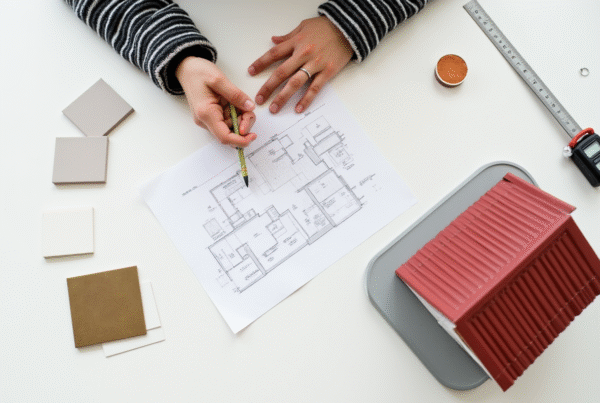Over the past two months, a flurry of tariff-related announcements has stirred up the economic landscape, with many policies slated to take effect on April 2, 2025, and more updates potentially on the horizon. These changes are poised to ripple through various sectors, including real estate, property management, and the broader economy. In this post, we’ll explore how tariffs could influence these areas, but first, let’s break down the basics of how tariffs work and where they stand today.
Tariffs 101: How Do They Work?
Tariffs are essentially taxes slapped onto imported goods, calculated as a percentage of the price an American importer pays a foreign seller. U.S. Customs & Border Protection collects these fees at ports of entry, and the revenue goes straight to the U.S. Treasury. Contrary to a popular myth, foreign countries don’t foot the bill—American companies do. To offset the added cost, these importers often hike their prices, which can trigger a domino effect: competitors follow suit, and inflation creeps in.
While tariffs make foreign goods pricier and less competitive, they’re typically wielded as a tool to penalize nations for trade practices deemed unfair—like flooding markets with cheap products to dominate market share. The threat of tariffs can nudge other countries into aligning with U.S. interests, but there’s a flip side: retaliation. This tit-for-tat escalation often sparks what’s known as a trade war.
What’s a Trade War?
A trade war kicks off when one country curbs imports from another—usually through tariffs—in response to trade gripes. It’s a form of protectionism, where governments shield local businesses from foreign rivals to fix trade imbalances (when imports outstrip exports). Supporters argue it bolsters domestic industries; critics say it slams consumers with higher prices, hurts local firms reliant on imports, and stalls economic growth.
A Quick Look at U.S. Trade Policy
Before the federal income tax debuted in 1913, tariffs were a cash cow for the U.S. government. Post-World War II, the U.S. championed global free trade, but that stance shifted as manufacturing jobs dwindled—blamed partly on unrestricted trade and China’s rise. The 1990s brought NAFTA, weaving the U.S., Mexico, and Canada into a tariff-light trade bloc. That evolved into the USMCA in 2020 under President Trump, keeping these nations as the U.S.’s top trading partners. Today, 78% of Mexican exports and 75% of Canadian exports flow to the U.S., with supply chains tightly knit across borders.
The Latest on Trump’s Tariff Plans
Here’s where things stand as of March 26, 2025:
- Canada & Mexico: Tariffs kicked off February 1 at 25% on goods outside the USMCA, paused briefly, then resumed March 4 amid ongoing talks. More details are expected April 2. Canada’s already hit back with tariffs on U.S. goods; Mexico’s response is pending.
- China: A 20% tariff is in place, layered atop 10-25% tariffs from Trump’s first term on items like electronics, steel, aluminum, and appliances. China’s countered with tariffs and export curbs.
- Europe: On March 11, 25% tariffs landed on EU steel and aluminum. The EU retaliated with tariffs on U.S. steel, aluminum, appliances, and more. Further moves might drop April 2.
- Steel & Aluminum: A 25% tariff hit on March 12, with 80% of U.S. aluminum and 17% of steel imported. More could come April 2.
- Copper & Lumber: A 25% tariff is in the works, though specifics are TBD.
- Reciprocal Tariffs: A February 14 executive order aims to mirror other nations’ tariffs on U.S. goods. Details are due April 2, but implementation could lag due to complexity.
How Tariffs Will Hit Real Estate
The big story for real estate? Rising costs for building materials. About 7% of residential construction materials are imported, but key items like softwood lumber (33% imported, 75% from Canada) and gypsum (75% from Mexico) lean heavily on foreign supply. China chips in steel, aluminum, and appliances, while Europe adds to the metal mix.
The National Association of Home Builders (NAHB) notes materials are already 34% pricier than in December 2020. Tariffs could push that higher, impacting:
- Housing Costs: Homebuyers and renters will feel the pinch as builders pass on expenses. New projects might not pencil out, deepening the U.S. housing shortage.
- Renovations & Maintenance: Property owners face steeper bills for lumber, drywall, steel, and appliances, squeezing rental margins. This could nudge rents up as landlords compensate.
- Policy Ripple Effects: Propmodo suggests surging rents might spark rent control or tenant protections, echoing pandemic-era moves.
Property managers will need to double down on preventative maintenance to keep costs in check and prove their worth to owners facing tighter budgets.
The Economic Fallout
Tariffs aim to juice domestic production long-term—think carmakers like Honda or tech giants like Apple eyeing U.S. investments (Apple’s pledged $500 billion). But short-term pain is likely:
- Inflation: Yale Budget Lab pegs a 1.7% price jump from reciprocal tariffs, or 2.1% with retaliation—costing households $2,721 to $3,401 in disposable income.
- Growth: GDP could dip 0.1 to 0.6 points in 2026, stunting the economy’s size.
- Interest Rates: The Fed might keep rates elevated to tame inflation expectations. If landlords preemptively hike rents or workers demand bigger raises, that pressure could linger, per the Wall Street Journal.
What’s Next?
With April 2 looming, the tariff saga’s far from over. Real estate pros and property managers should brace for higher costs, tighter margins, and shifting tenant dynamics. Economically, it’s a gamble—domestic gains might emerge, but not without growing pains. Stay tuned for updates as the policy puzzle unfolds. How are you prepping for these changes? Let’s chat in the comments!



